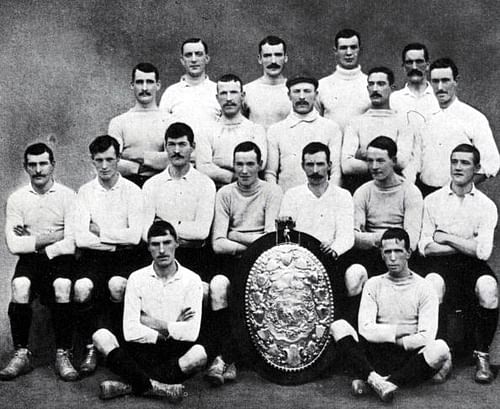
History of Tottenham Hotspur - Part 1: The story begins

Having followed Spurs since 1970 at home and away, Martin Cloake knows the history and traditions of this great club. He is the author of several popular books about the club and, in a series of exclusive articles for India Spurs, he’ll be telling the story of just what makes Tottenham Hotspur the most unique club in world football.
In September 1882 in a small suburb just north of the city of London, a group of cricket-playing boys from a Scottish Presbyterian Academy called St John’s Middle Class School met under a lamppost on the corner of Tottenham High Road and Park Lane and formed a football club. The club was to become one of the most famous names in world football, and today the stadium it plays in still overlooks the site of that original meeting in the street.
The boys were members of the Hotspur Cricket Club and, with the summer days slipping away into autumn, were anxious to continue playing sport. And so Hotspur Football Club was formed, its 11 founders all school boys aged between 13 and 14. Hotspur’s first game was against a side called the Radicals, who had been playing as a team for two years and whose players were slightly older. Experience told, and Hotspur lost 2-0. The only other game recorded in that first season was an 8-1 defeat at the hands of neighbouring side Latymer.
The following season the boys decided they would concentrate on football, and enlisted adult help. They approached John Ripsher, the clerk of a local iron works who also ran a Bible class in the Parish Church of All Hallows and had established himself as a popular figure with the local boys. Ripsher helped put the club on a formal footing, with a proper membership system and a defined area of ground where home matches would be played.
Hotspur began its first proper season, clad in blue shirts with a red H on the front, with a 9-0 thrashing of Brownlow Rovers. That season, the team went on to win 15 of the 20 games it played.
By 1884-85, the club was building a reputation for playing attractive, attacking football and was beginning to draw large crowds to Tottenham Marshes, where it played. At the end of that season the club changed its name to Tottenham Hotspur, to avoid confusion with another club called London Hotspur.
In 1885-86, Spurs scored 100 goals in the 37 games played, conceding just 51. The club also entered the London Association Cup, beating an experienced St Albans side 5-2 before losing 8-0 to the Casuals, one of the most famous and successful sides of the time.
By 1886-87, up to 4,000 people were making their way to Tottenham Marshes to watch the Spurs play on public space. The club decided finding a private ground was the way forward, enabling them to draw income from spectators and also to control the frequently chaotic scenes as spectators milled around the edge of the pitch. The Marshes were known as a tough place to visit, with opposing teams complaining about frequent encroachments on the pitch and fans often resorting to abusing visiting players and pelting them with mud and rotten vegetables.
In 1888, Spurs played their first game on a new, enclosed ground at Northumberland Park and continued to draw large crowds throughout the season. The foundations of the Tottenham Hotspur story were in place.
About the author:
Martin Cloake is a writer and editor who lives in London, UK. A Spurs season ticket holder, he has followed the team since 1970, travelling all over the UK and Europe to support them. His latest book, ‘Sound of the Crowd’, is a look at the changing fan culture in England with an emphasis on Spurs supporters. He is a regular contributor to Spurs fansites and podcasts. He also writes widely on football and the football business for a variety of publications including the New Statesman.
Martin Cloake’s books about Tottenham Hotspur, including ebooks that can be downloaded directly to your computer or mobile device, can be ordered from his bookstore. His full bio can be seen here.
You can also visit India Spurs Facebook page and Twitter account.